#marine hull insurance
Photo
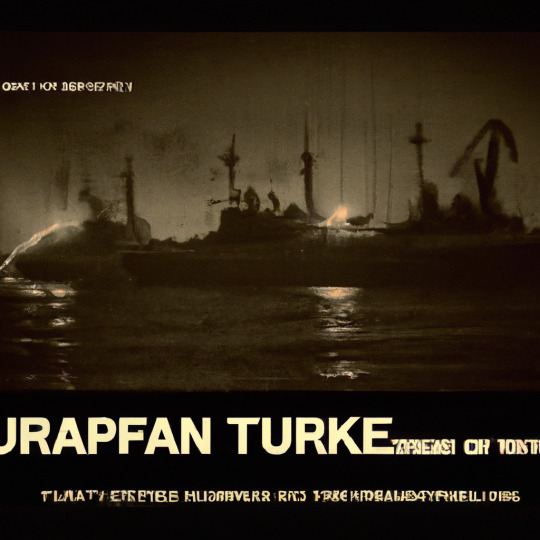
The Black Sea has always been shrouded in an air of mystery, and with Russia's latest warning, it takes on a darker hue than ever before. Tensions between the two countries have been mounting, and the warning places a blanket of suspicion over any ship venturing into Ukraine's waters. Even the bravest of sailors dare not venture into these troubled waters, and the sea itself seems to take on the same sense of menace that has come to dominate the region. Plagued by dark secrets and unspoken truths, the Black Sea is a place of fear and worry, its depths unplumbed by men. Beneath these hostile waters, unknown dangers lurk, waiting to strike unsuspecting ships like a ravenous beast. With the latest warning, the Black Sea seems to dare any foolhardy captain to risk their fate in its murky depths.
#International & Reinsurance News#Black Sea grain initiative#marine cargo insurance#marine hull insurance#marine insurance#marine war risks#Russia Ukraine war#Ukraine grain#war risk insurance#fault
0 notes
Text
https://www.dgnote.com
#marine insurance service in mumbai#hull insurance#freight insurance#cargo insurance#open marine specific policy#inland marine coverage
1 note
·
View note
Text
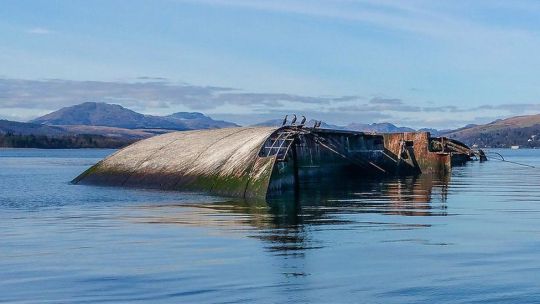
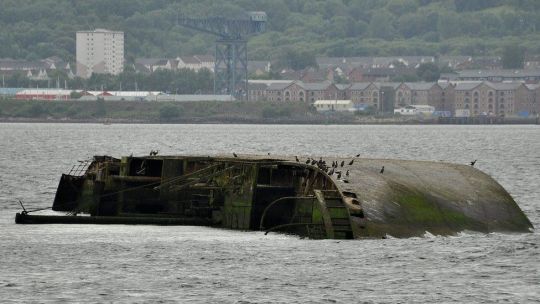
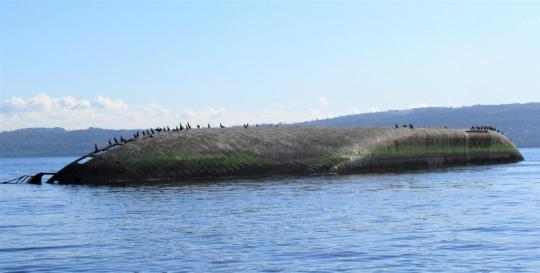
January 27th 1974 the Greek sugar-carrying merchant navy ship Captayannis dragged it’s anchor and capsized on the Firth of Clyde between Greenock and Helensburgh.
The 4,567-ton 'sugar boat’ got into trouble on the night of January 27, when a fierce storm hit.
The vessel had dropped anchor at the Tail of the Bank, with a cargo of sugar from Lourenco Marques in Portuguese East Africa, and waited for high tide to offload it at the James Watt Dock sugar terminal for processing at Tate & Lyle’s Westburn Refinery.
However, a severe gale hit the west coast, with winds of more than 60mph, and the Captayannis began to drag anchor.
Captain Theodorakis Ionnis ordered the engine to be started, intending to make for the more sheltered waters of the Gare Loch.
Also anchored at the Tail of the Bank, however, was the 36,754 ton BP tanker British Light, recently arrived from Elderslie dry dock.
Before the Captayannis could power-up, the gale blew her towards the tanker, and, although the two vessels didn’t touch, the tanker’s anchor chain ripped through the passing Captayannis’ hull.
Seawater immediately started pouring in, and the pumps couldn’t cope.
The captain made for the sandbank to try to ground his ship, but, when he reached it, the profile of the hull meant the vessel wasn’t stable and began to heel over to port.
This resulted in all power being lost, and the Captayannis eventually settled port side down on the sandbank.
The crew were rescued, without injury, by the tug Labrador and the MV Rover of Clyde Marine Services.
By 10am on January 28, wreckage from the ship had already been washed ashore at Helensburgh.
The vessel has lain in the same spot since the sinking and is not considered a hazard to navigation.
She remains unable to be removed due to a wrangle between her owners and insurers, and plans to have her blown up were shelved due to fears over damage to the nearby Ardmore Point bird sanctuary.
The locals don't seem to mind the wreck lying there as it became a popular attraction for young fishermen and even tourists, a Bistro on Colquhoun Square, Helensburgh even bears the name Sugarboat. Through time Captayannis has become 'home' to marine life and birds, the wreck is even visible on satellite and is tagged on Google Earth.
Clyde Charters are running trips from James Watt Dock Marina to MV Captayannis to mark 50 years since the ship. It's a small boat carrying 12 passengers and the trip, which lasts an hour costs £17.95 for adults and £12.95 for children.
8 notes
·
View notes
Text
The garage-built jack-job sub and capital H Hubris
Y'all are going to get sick of me.
So, there's this post on OceanGate's site. Read it.
Now, from the top.
Come over here, you dumbfuck. Oh, forgot. You're on the ship, too, and most likely dead.
Lets look at this part first:
Most major marine operators require that chartered vessels are “classed” by an independent group such as the American Bureau of Shipping (ABS), DNV/GL, Lloyd’s Register, or one of the many others. These groups have assembled very detailed standards for classing everything from oil tankers to auxiliary ship equipment like Remotely Operated Vehicles (ROVs). Many of these standards are based on industry practice or covered by regulations such as reserve buoyancy, the number of life rafts, the types of materials that can be used on a hull, etc.
Classing assures ship owners, insurers, and regulators that vessels are designed, constructed and inspected to accepted standards.(1) Classing may be effective at filtering out unsatisfactory designers and builders, but the established standards do little to weed out subpar vessel operators – because classing agencies only focus on validating the physical vessel. They do not ensure that operators adhere to proper operating procedures and decision-making processes – two areas that are much more important for mitigating risks at sea. The vast majority of marine (and aviation) accidents are a result of operator error, not mechanical failure(2). As a result, simply focusing on classing the vessel does not address the operational risks. Maintaining high-level operational safety requires constant, committed effort and a focused corporate culture – two things that OceanGate takes very seriously and that are not assessed during classification.
*deep breath*
(1) Assuring regulators, buyers, and insurers that a vessel is fit for purpose means that a vessel is constructed in a manner generally accepted as safe.
(2) If you accept that the majority of marine and aviation accidents are operator error, then one can also argue that operators during those accidents are operating a vehicle recognized as safe in an unsafe manner.
Draw your own conclusions.
26 notes
·
View notes
Text
From OceanGate's blog: "Why isn't Titan Classed?"
The below is copy/pasted from the official blog. Bolding is my own.
---------------
Most major marine operators require that chartered vessels are “classed” by an independent group such as the American Bureau of Shipping (ABS), DNV/GL, Lloyd’s Register, or one of the many others. These groups have assembled very detailed standards for classing everything from oil tankers to auxiliary ship equipment like Remotely Operated Vehicles (ROVs). Many of these standards are based on industry practice or covered by regulations such as reserve buoyancy, the number of life rafts, the types of materials that can be used on a hull, etc.
Classing assures ship owners, insurers, and regulators that vessels are designed, constructed and inspected to accepted standards. Classing may be effective at filtering out unsatisfactory designers and builders, but the established standards do little to weed out subpar vessel operators – because classing agencies only focus on validating the physical vessel. They do not ensure that operators adhere to proper operating procedures and decision-making processes – two areas that are much more important for mitigating risks at sea. The vast majority of marine (and aviation) accidents are a result of operator error, not mechanical failure. As a result, simply focusing on classing the vessel does not address the operational risks. Maintaining high-level operational safety requires constant, committed effort and a focused corporate culture – two things that OceanGate takes very seriously and that are not assessed during classification.
Innovation and Classing
When OceanGate was founded the goal was to pursue the highest reasonable level of innovation in the design and operation of manned submersibles. By definition, innovation is outside of an already accepted system. However, this does not mean that OceanGate does meet standards where they apply, but it does mean that innovation often falls outside of the existing industry paradigm.
While classing agencies are willing to pursue the certification of new and innovative designs and ideas, they often have a multi-year approval cycle due to a lack of pre-existing standards, especially, for example, in the case of many of OceanGate’s innovations, such as carbon fiber pressure vessels and a real-time (RTM) hull health monitoring system. Bringing an outside entity up to speed on every innovation before it is put into real-world testing is anathema to rapid innovation. For example, Space X, Blue Origin and Virgin Galactic all rely on experienced inside experts to oversee the daily operations, testing, and validation versus bringing in outsiders who need to first be educated before being qualified to ‘validate’ any innovations.
Depth Validating
As an interim step in the path to classification, we are working with a premier classing agency to validate Titan’s dive test plan. A licensed marine surveyor will witness a successful dive to 4000 meters, inspect the vessel before and after the dive, and provide a Statement of Fact attesting to the completion of the dive test plan.
Innovation and Risk Mitigation
In addition to designing and building an innovative carbon fiber hull, our team has also developed and incorporated many other elements and procedures into our operations to mitigate risks.
OceanGate’s submersibles are the only known vessels to use real-time (RTM) hull health monitoring. With this RTM system, we can determine if the hull is compromised well before situations become life-threatening, and safely return to the surface. This innovative safety system is not currently covered by any classing agency.
No other submersible currently utilizes real-time monitoring to monitor hull health during a dive. We want to know why. Classed subs are only required to undergo depth validation every three years, whereas our RTM system validates the integrity of the hull on each and every dive.
Our risk assessment team looks at the entire expedition and completes a detailed, quantified risk assessment for each dive. The risk assessment takes into account 25 specific factors that can influence a dive outcome. Using that information, a dive plan is written to mitigate against these known risks. These risk factors include things like weather forecast, sea state, sub maintenance, crew fatigue, predicted currents, dive site experience, recent dive history, schedule expectations, crew experience, and more. In this assessment, the actual operational risks are almost always concentrated on the surface operations not the subsea performance of the submersible.
Another simple risk mitigation step we take, that we believe to be unique to OceanGate is that we draw a small vacuum on the inside of the sub at the start of each dive. This step verifies the integrity of the low-pressure O-ring seal and eliminates the risk of leaks – a proven problem that even some other classed submersibles experience.
Classing is Not Sufficient to Ensure Safety
Classing standards do have value. In fact, our first submersible, Antipodes, has always been ABS classed and our entire team is well aware of the classing standards and the value of using them as a benchmark for vessel performance. But by itself, classing is not sufficient to ensure safety. In part this is because classing does not properly assess the operational factors are vital for ensuring a safe dive, and because classing assessments are done annually (at best) and do not ensure that the operator follows procedures or processes that are the key to conducting safe dive operations.
9 notes
·
View notes
Video
youtube
Marine ship inspection and surveyors services approval report•technical ship inspection services•marine warranty surveyors•ship seaworthy inspection•ship hull and machinery survey•ship condition inspection services•ship operation inspection services•ship insurance survey services•ship charter survey services•ship new building survey at ship yard•ship's handling survey inspection at ports•ship accident investigation at sea and anchor•ship ISM Code survey services•ship safety inspection services•ship on hire, off hire, P
1 note
·
View note
Text
Marine Insurance - Know Its Meaning, Types, and Benefits
Marine Insurance is a type of insurance policy that covers damages to the goods shipped by sea. The coverage includes the damages caused to ships and goods from the origin place to the destination. It is also known as cargo insurance, which is its subset and covers onshore and offshore exposed property, such as hulls, ports, container terminals, pipelines, and oil platforms. Before you move to consult the best insurance broker in south Delhi or your locality and finalize the purchase of a marine insurance policy, you should know the following points/things. for more information contact us: +91-9990260111
0 notes
Text
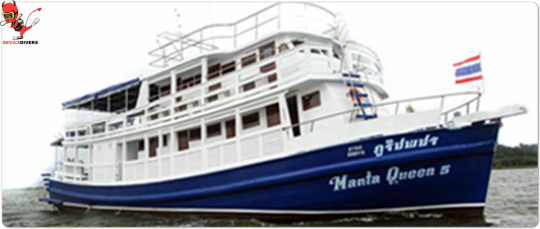
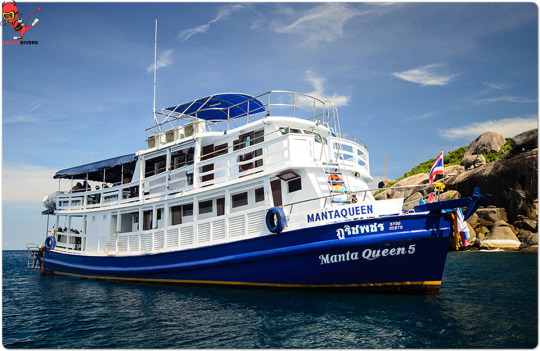

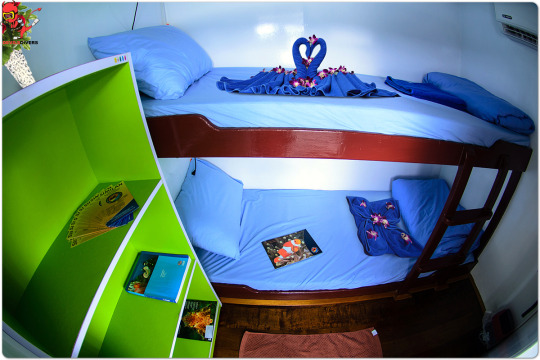
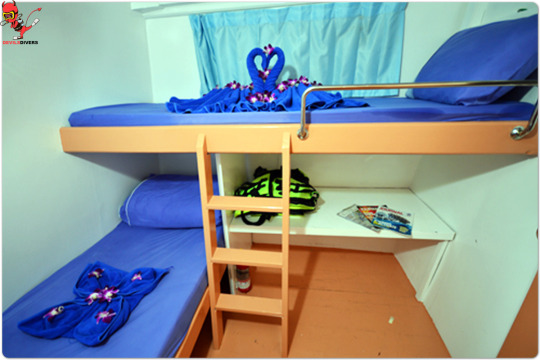

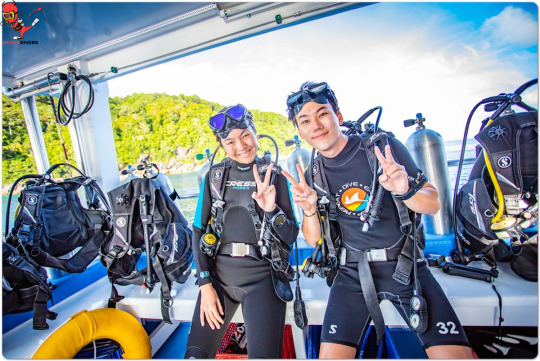
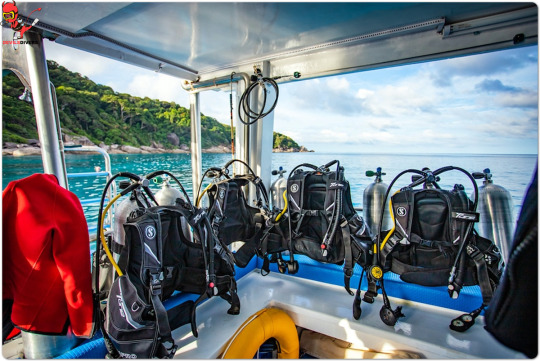

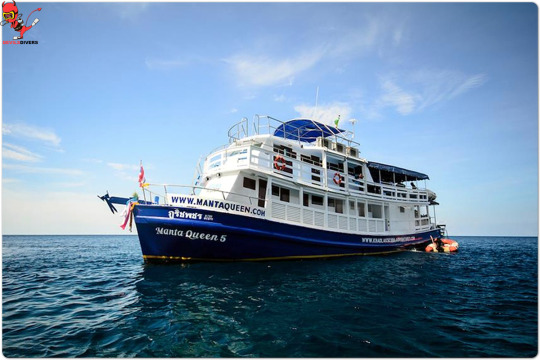








MANTA QUEEN 5 LIVEABORD
Manta Queen 5 accommodates 20 guests in comfortable air-conditioned shared twin bunk bed non-ensuite. The liveaboard vessel is 21 meters long and 5 meters wide wooden hull built boat that is manned with 5 dive staff and 7 Boat Crew”. There is plenty of space to enjoy the time in between dives in the sundeck, open dining and relax areas.
Departure & Return Location
Thaplamu pier
MANTA QUEEN 5 LIVEABORD
gallery

MANTA QUEEN 5 LIVEABORD
Deck Plan

What to Expect
Manta Queen 5 skips the Similan Islands and dives only the more advanced northern dive sites. The marine ecology in this northern area is amazing, colourful schools of fish, coral reefs, and endangered species that welcome divers like the Whale Sharks or Manta Rays. Look out for such photogenic little critters as ghost pipefish, sea moths, frogfish, ribbon eels and many different nudibranchs. Koh Bon and Koh Koh Tachai, members of the Similan Marine Park, are first visited en-route to the farthest and world-famous dive site of Richelieu Rock in the Surin National Marine Park.
Whatever your scuba diving pleasure might be, the Similan and Surin Marine Parks are the dive destinations that will satisfy your desires and give you the trip of a lifetime.
MANTA QUEEN 5 Liveaboard
Information
MANTA QUEEN 5
Liveaboard Information
Manta Queen 5 accommodates 20 guests in comfortable air-conditioned shared twin bunk bed non-ensuite. The liveaboard vessel is 21 meters long and 5 meters wide wooden hull built boat that is manned with 5 dive staff and 7 Boat Crew”. There is plenty of space to enjoy the time in between dives in the sundeck, open dining and relax areas.
Diving Equipment
Full set equipment rental - 2,500 THB per trip (BCD, REG, Mask, Snorkel, Full Foot Fins, Shorty wetsuit, Torch)
Dive computer rental - 1,000 THB per trip
.
Drinks On Board
Drinking water, coffee, tea, electrolyte drinks are included. Sodas are 30 – 40 Baht. Beers 70 – 80 Baht.
The Food on Board
KSA Liveaboard is proud to offer the best tasting Thai-European Fusion Cuisine, freshly prepared by our onboard chefs on the whole Manta Queen Fleet. Our catering options can be adjusted for vegetarian/vegan divers as well. The use of Monosodium Glutamate is banned on all of our trips. If you are allergic to nuts or other food ingredients, please notify the staff during your check-in. All meals onboard are served freshly cooked from the onboard kitchen. Snacks and fruits are served in between dives.
Amenities & Services
Air-Conditioning
Wi-Fi (Free)
Spacious Diving Platform
Food And drinks
Lounge/TV Area
Power Socket Adapters
What's Included
All meals onboard
Water, tea, coffee, fresh fruit, soft drinks (limited) and snacks (Good to have own re-useable water bottle on trip)
Towel for shower (Suggest guests bring own towel or sarong for sun deck or to dry off on dive deck after dive)
Wifi on board (normally only at Boonsung wreck)
12-liter tanks for 11 dives - Weight belt/weights
Small group 4-5 divers : 1 dive lead
(When course is booked) PADI course E-manual and E-card Registration Fee
Round trip transfer from Khao lak area - Thaplamu pier
Round trip transfer from Phuket area - Thaplamu pier
7% VAT
Toiletries
What's Excluded
Full set equipment rental – 1,500 THB per trip (BCD, REG, Mask, Snorkel, Full Foot Fins, Shorty wetsuit, Torch)
Dive computer rental - 1,000 THB per trip
Marine Park Fee (4D3N) –
Thai : 1,100 THB (diver), 300 THB (non diver)
Foreigner : 2,300 THB (diver), 1,500 THB (non diver)
Dive insurance - 800 THB per trip (Coverage 500,000 THB/pax)
Unlimited Nitrox package 2,500 THB per trip
15-liter tanks - 2,500 THB/Trip/11 Dives (can only rent for all dives)
Full length 3mm wetsuit rental - 1,000 THB per trip
Prescription mask rental - 1,000 THB per trip
MANTA QUEEN 5 LIVEABORD
Accommodation

Twin Bed Non-ensuite Cabin
Comfortable air-conditioned cabin with 2 single beds.
Price: 22,000 THB per person
Room Size: 3 m²
Max. Occupancy: 2
Beds: 2 Bunk
Private Bathroom: No
Wifi on board: Yes
Air Conditioning: Yes
MANTA QUEEN 5 4D/3N 11 Dives
Similan-Koh Bon-Tachai-Richelieu Rock
NORTH ANDAMAN ITINERARY
North Andaman : 4D/3N 11 Dives
Koh - Bon Koh - Tachai - Richelieu - Boon Sung Wreck
Day 1 - Night Departure (“General” Trip Check In on Liveaboard runs from 6pm to 8:30pm)
06.00 PM – Start Check-in & Cabin allocation on Liveaboard at Thaplamu Pier – Khao Lak
07.00 PM – General boat briefing.
07.30 PM – Dinner onboard.
08.00 PM – Equipment set up.
Day 2
07.00 AM – Wake up call
07.30 AM – Dive/Safety briefing
07.45 AM – Dive briefing #1 “Koh Bon, West Ridge”
09.00 AM – Breakfast
11.30 AM – Dive briefing #2 “Koh Bon, West Ridge”
01.00 PM – Lunch
03.30 PM – Dive briefing #3 “Tachai Pinnacle”
05.00 PM – Snacks
06.15 PM – Dive briefing #4 “Tachai Beach”
08.00 PM – Dinner
Day 3
06.00 AM – Wake up call
06.30 AM – Dive briefing #5 “Tachai The Dome”
08.00 AM – Breakfast
10.30 AM – Dive briefing #6 “Richelieu Rock”
12.15 PM – Lunch
01.45 PM – Dive briefing #7 “Richelieu Rock”
03.30 PM – Snacks
05.30 PM – Dive briefing #8 “Richelieu Rock”
07.30 PM – Dinner
Day 4
06.00 AM – Wake up call
06.30 AM – Dive briefing #9 “Koh Bon Pinnacle”
08.00 AM – Breakfast
11.15 AM – Dive briefing #10 “Koh Bon”
12.30 PM – Lunch
02.00 PM – Dive briefing #11 “Boon Sung Wreck”
03.15 PM – Departure briefing & Snacks
04.30 PM – Return to the pier
05.00 PM – Transfer to the check out lounge
05.30 PM – Transfer To Your Hotel
Depending on location, you’ll arrive back to your hotel in Phuket at approximately 7pm – 8:30 pm.
Map
KSA Liveaboard 4D/3N 11Dives Trip Route
Similan–Koh Bon–Tachai–Richelieu

#푸켓다이빙#시밀란리브어보드#푸켓#푸켓자유여행#만타퀸5리브어보드#푸켓리브어보드#피피리브어보드#태국리브어보드#타이리브어보드#similanliveabord#similanliveaboard#phukettour#phuketdiving#phuketliveaboard#mantaqueen5liveaboard#thailandliveaboard
0 notes
Text
Your Guide to Marine Insurance: Types of Marine Insurance Policy
Marine insurance is a type of insurance that provides coverage for ships, cargo, and other marine-related risks. It offers coverage for the loss or damage of ships, cargo, and terminals during transportation by sea, as well as other damages that can occur during marine operations.
Why is marine insurance important for businesses?
Marine activities involve inherent risks, including accidents, natural disasters, theft, and liability claims.
Deal with financial losses: It provides compensation for damages or losses to vessels, cargo, or goods in transit, reducing the financial burden on businesses and individuals.
Comply with contractual requirements: Many contracts and agreements, especially those involving international trade, necessitate marine insurance as a condition.
Ensure business continuity: Marine liability insurance ensures that businesses can recover and resume operations swiftly after a loss, minimising disruption and maintaining profitability.
Legal requirements: In many cases, marine insurance is a legal requirement. In certain countries, ships must have insurance coverage before entering their ports.
Types of Marine Insurance Policy
Marine Cargo Insurance
Marine cargo insurance protects cargo owners from financial losses due to mishandling, damage, loss, or misplacement of their goods during transportation. It is obtained by paying a premium and covers third-party liability for any damage caused by the cargo to the port, ship, railway track, other cargo, or individuals.
Covers loss or damage to goods during transportation by sea, air, or land
Provides coverage for risks such as theft, fire, accidents, and natural disasters
Offers financial protection to importers, exporters, and logistics companies
Ensures the value of goods in transit is safeguarded
Minimises financial losses by compensating for damaged or lost cargo
Hull and Machinery Insurance
Hull insurance protects ship owners by covering the main supporting structure of a vessel in the event of a ship disaster. It is commonly used by ship owners and can be complemented by machinery insurance, which provides coverage for operational, mechanical, and electrical damage to the ship's machinery. Together, they are issued as Hull and Machinery Insurance.
Protects the vessel itself, including its hull, machinery, and equipment
Covers risks like collisions, grounding, sinking, and malicious acts
Safeguards the substantial investment in the vessel
Provides financial security for shipowners, operators, and charterers
Ensures operational continuity by covering repair costs for vessel damages
Freight Insurance
Freight insurance protects shipping businesses from liability in the event of lost or damaged goods or a lost ship. It provides compensation to the business for their financial loss, ensuring they are not held accountable for such incidents.
Protects freight forwarders or carriers against financial losses
Covers the freight charges associated with lost or damaged cargo during transit
Provides financial security for freight forwarders and carriers
Minimises financial losses resulting from non-delivery or damage to goods
Ensures the financial stability of freight forwarders and carriers
Provides reassurance to businesses and customers regarding the safe delivery of goods
Marine insurance is a crucial aspect of protecting your business and assets involved in maritime activities. Liberty General Insurance offers comprehensive marine liability insurance policies that cater to the diverse needs of businesses and individuals.
Explore Liberty General’s marine insurance policies to secure your future, protect your business from potential risks, and ensure financial stability. Safeguard your marine operations with reliable and comprehensive marine liability insurance policies.
0 notes
Photo

The Kremlin issued a warning to any ships traveling to Ukraine's Black Sea ports, stating that they do so at their own risk. Any vessels entering the area may be subject to seizure or destruction due to the current conflict between Russia and Ukraine. The Russian government has made it clear that they will not tolerate any interference in their operations in the region.
#International & Reinsurance News#Black Sea grain initiative#marine cargo insurance#marine hull insurance#marine insurance#marine war risks#Russia Ukraine war#Ukraine grain#war risk insurance#fault
0 notes
Text
#insurance and risk management#insurance brokers#risk managers#marine insurance#marine insurance policy#marine transport insurance#marine liability insurance#marine cargo insurance
0 notes
Text




January 27th 1974 the Greek sugar-carrying merchant navy ship Captayannis dragged it’s anchor and capsized on the Firth of Clyde between Greenock and Helensburgh.
The 4,567-ton 'sugar boat’ got into trouble on the night of January 27, when a fierce storm hit.
The vessel had dropped anchor at the Tail of the Bank, with a cargo of sugar from Lourenco Marques in Portuguese East Africa, and waited for high tide to offload it at the James Watt Dock sugar terminal for processing at Tate & Lyle’s Westburn Refinery.
However, a severe gale hit the west coast, with winds of more than 60mph, and the Captayannis began to drag anchor.
Captain Theodorakis Ionnis ordered the engine to be started, intending to make for the more sheltered waters of the Gare Loch.
Also anchored at the Tail of the Bank, however, was the 36,754 ton BP tanker British Light, recently arrived from Elderslie dry dock.
Before the Captayannis could power-up, the gale blew her towards the tanker, and, although the two vessels didn’t touch, the tanker’s anchor chain ripped through the passing Captayannis’ hull.
Seawater immediately started pouring in, and the pumps couldn’t cope.
The captain made for the sandbank to try to ground his ship, but, when he reached it, the profile of the hull meant the vessel wasn’t stable and began to heel over to port.
This resulted in all power being lost, and the Captayannis eventually settled port side down on the sandbank.
The crew were rescued, without injury, by the tug Labrador and the MV Rover of Clyde Marine Services.
By 10am on January 28, wreckage from the ship had already been washed ashore at Helensburgh.
The vessel has lain in the same spot since the sinking and is not considered a hazard to navigation.
She remains unable to be removed due to a wrangle between her owners and insurers, and plans to have her blown up were shelved due to fears over damage to the nearby Ardmore Point bird sanctuary.
The locals don't seem to mind the wreck lying there as it became a popular attraction for young fishermen and even tourists, a Bistro on Colquhoun Square, Helensburgh even bears the name Sugarboat. Through time Captayannis has become 'home' to marine life and birds, the wreck is even visible on satellite and is tagged on Google Earth.
22 notes
·
View notes
Text
Ensure Accurate Marine Vessel Assessment with A&L MARITIME EXPERTS, LLC!
The maritime industry is not without its risks, and unfortunate accidents resulting in fatalities are a grim reality. When such tragedies occur, marine accident investigation becomes imperative to uncover the causes and prevent future occurrences. The need for boat repair assessment arises to restore vessels to their seaworthy state, while yacht insurance surveyors play a pivotal role in mitigating financial losses for vessel owners.

Marine Accident Investigation in Death Cases
Marine accidents resulting in fatalities demand thorough investigation to ascertain the causes and contributing factors. These investigations are often conducted by specialized agencies or independent experts with extensive knowledge of maritime regulations and accident reconstruction techniques. The process involves gathering evidence from various sources, including eyewitness accounts, onboard data recorders, and wreckage examination.
Investigators meticulously analyze factors such as weather conditions, vessel maintenance records, and the actions of involved parties leading up to the accident. In cases of fatalities, forensic experts may be called upon to conduct autopsies and determine the cause of death. The ultimate goal of marine accident investigation death cases is not only to establish accountability but also to implement preventive measures to enhance safety at sea.
After a marine accident, whether minor or catastrophic, the affected vessel requires prompt assessment and repair to restore its seaworthiness. Boat repair assessment involves a comprehensive inspection of the vessel's hull, propulsion systems, electrical components and onboard equipment. Experienced marine technicians assess the extent of damage and develop a detailed repair plan to address structural integrity and functionality issues.
Depending on the severity of damage, repairs may range from minor fiberglass patching to extensive hull reconstruction. Throughout the repair process, adherence to industry standards and regulatory requirements is paramount to ensure the vessel's safety and compliance. Additionally, boat repair assessment may include preventive measures to mitigate the risk of future accidents such as reinforcing weak structural areas or upgrading safety equipment.
Yacht Insurance Surveyors
Yacht insurance surveyors play a crucial role in assessing the insurability and risk profile of luxury vessels. These professionals conduct thorough inspections of yachts to evaluate their condition, maintenance history, and compliance with safety regulations. The information gathered during surveys helps insurance underwriters determine appropriate coverage levels and premiums based on the assessed risk.
In addition to pre-insurance surveys, yacht insurance surveyors may also be called upon to investigate damage claims and assess the extent of losses incurred. Their expertise in vessel construction, marine engineering and insurance regulations enables them to provide accurate assessments and facilitate the claims process efficiently. By working closely with vessel owners, insurers and repair facilities, yacht insurance surveyors contribute to the smooth resolution of insurance-related matters in the maritime industry.As far as my personal experience is concerned, you must realize the importance of services available at A&L MARITIME EXPERTS, LLC.
1 note
·
View note
Text
Trust Skilled Boat and Yacht Inspectors Florida for Professional Assistance
In the heart of Florida's Gulf Coast and nestled amidst the tranquil water of Crystal River, Homosassa, and the inland lakes of Lakeland, boat and yacht inspectors play a crucial role in ensuring the safety, seaworthiness, and compliance of vessels navigating these picturesque waterways. With their expertise, professionalism, and dedication to excellence, these inspectors uphold the highest standards of maritime integrity and safeguard the interests of boat owners, buyers and insurers across the region.

Crystal River and Homosassa, renowned for their pristine waters, abundant marine life, and scenic beauty, attract boating enthusiasts from far and wide. Crystal River Homosassa boat and yacht surveyors in these coastal communities specialize in providing comprehensive inspection services tailored to the unique needs of vessels navigating the area's intricate waterways. From pre-purchase surveys to insurance assessments and damage evaluations, these inspectors offer invaluable insights into the condition, value, and compliance of boats and yachts, ensuring that owners and buyers can navigate the waters peacefully.
Lakeland, situated amidst a network of picturesque lakes and waterways in central Florida, is a haven for boaters seeking tranquility and natural beauty. Lakeland boat surveyors provide essential inspection services to boat owners, buyers, and insurers ensuring the safety and reliability of vessels navigating the region's inland lakes. Whether it's about assessing the condition of a vintage wooden boat or conducting a pre-purchase inspection for a modern motor yacht, these inspectors bring a wealth of expertise and experience to every inspection, delivering accurate, impartial, and timely assessments to meet the needs of their clients.
Boat and yacht inspectors Florida adheres to the highest standards of professionalism, integrity and customer service. With their thorough knowledge of maritime regulations, industry best practices and local conditions, they provide clients with the information needed to make informed decisions about their vessels. Whether it's about verifying compliance with safety standards, assessing condition of hulls and propulsion systems, or identifying potential issues that may affect the seaworthiness or value of a vessel, these inspectors play an indispensable role in supporting the boating communities of Florida's Gulf Coast and inland lakes.
Boat and yacht inspectors serve as trusted advisors and guardians of the seas, ensuring that vessels meet the highest standards of safety, reliability, and compliance. Whether it's about navigating the crystal-clear water of Crystal River and Homosassa Springs, or exploring the serene lakes of Lakeland, boat owners and buyers can rely on the expertise and professionalism of these inspectors to safeguard their investments and ensure enjoyable and worry-free boating experiences.
With their unwavering commitment to excellence, experts in these communities continue to set the standard for maritime inspection services in Florida.According to me, you must consider the valuable maritime assistance being offered at A&L Marine Surveyors, LLC.
#Crystal River Homosassa boat and yacht surveyors#Lakeland boat surveyors#Boat and yacht inspectors Florida
1 note
·
View note
Text
Yacht Owners' Legal Protection Against Maritime Accidents
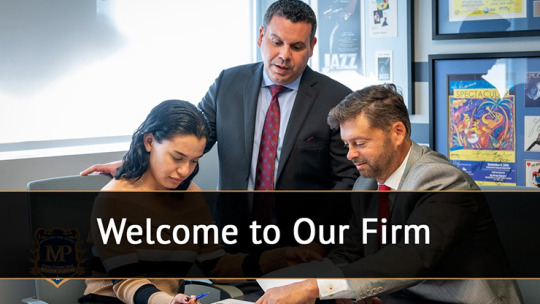
Yacht owners are drawn to the wide sea and their desire for amazing journeys however there are dangers involved in sailing over marine areas. For yacht owners, the legal consequences of unexpected accidents can be difficult and costly. We will discuss the legal aspects surrounding maritime accidents involving private yachts, exploring liability, insurance coverage, and the essential legal steps yacht owners should take to safeguard their interests after an accident.
Understanding Liability in Maritime Accidents:
1. Strict Liability and Negligence:
Maritime accidents often fall under the topic of strict liability or negligence. Strict liability holds yacht owners responsible for damages regardless of fault, while negligence requires establishing that the owner breached a duty of care. Yacht owners need a full understanding of these legal concepts to navigate the complexities of liability.
2. Proximate Cause and Contributory Negligence:
Determining the immediate cause of a maritime accident is important inassigning liability.Additionally, the amount of damages that can be recovered may be impacted by contributory negligence, in which both parties share some of the blame for the accident.
Yacht owners should be aware of these legal nuances when facing liability claims.
Insurance Coverage for Maritime Accidents:
1. Hull and Machinery Insurance:
Yacht owners typically invest in hull and machinery insurance to cover damage to the vessel itself. This insurance protects in the event of collisions, groundings, or other accidents that result in physical damage to the yacht.
2. Protection and Indemnity (P&I) Insurance:
P&I insurance extends coverage beyond the yacht itself, addressing liability for bodily injury, property damage, or other third-party claims. Yacht owners should carefully review the scope of their P&I coverage to ensure complete protection in the aftermath of an accident.
3. Salvage and Towage Coverage:
Accidents at sea may require salvage or towage services, which would be expensive. Yacht owners should determine whether their insurance policies include coverage for these services to avoid unexpected financial burdens.
Legal Steps for Yacht Owners After an Accident:
1. Prompt Reporting:
Yacht owners must report accidents promptly to their private yachts attorney hollywood. Failure to report on time may jeopardize coverage. Timely reporting enables insurers to conduct thorough investigations and assess the extent of liability.
2. Preserve Evidence:
Yacht owners should take immediate steps to preserve evidence related to the accident. This may include photographs, witness statements, logbooks, and any other relevant documentation. Preserving evidence is important for establishing the facts and supporting the owner's position in potential legal proceedings.
3. Cooperate with Investigations:
Yacht owners should fully cooperate with any investigations initiated by authorities or insurers. Transparency and cooperation contribute to a smoother claims process and may positively impact the outcome of liability determinations.
4. Engage Legal Counsel:
It is essential to work with knowledgeable maritime attorneys in cases involving complex maritime accidents. A private yachts lawyer Hollywood specializing in maritime law can guide yacht owners through the intricacies of liability, insurance claims, and any potential legal actions that may arise.
What Role Does Evidence Preservation Play in the Legal Protection of Yacht Owners Following a Maritime Accident?
Preserving evidence allows yacht owners to establish the sequence of events leading up to and following the maritime accident. This chronological account is important for determining the cause of the incident and assessing liability.
Insurance claims following a maritime accident require thorough documentation and evidence to substantiate the extent of the damage and the costs incurred. Preserving evidence such as photographs, video recordings, and witness statements helps create a complete and strong case for insurance claims.
#private yachts attorney hollywood#private yachts attorney fort lauderdale#private yachts lawyer hollywood
0 notes
Text
Disasters at sea trigger ship-safety advances

- By Tom Cassauwers , Horizon -
When one of the world’s largest container ships crashed into the bank of the Suez Canal in 2021, a major gateway for global trade became blocked with an estimated $9.6 billion in daily commerce being held up.
Accidents like the one involving the Ever Given almost three years ago are more common than might generally be thought. They also help explain the motivation behind EU research projects to improve shipping safety.
Ship shockwaves
In 2022, 10 cargo vessels were lost at sea, according to global insurer Allianz. Shipping transports 90% of the world’s goods.
‘Anyone reading this will, for example, be wearing something that was at one point transported by a ship,’ said Jorgen Grindevoll, chief executive officer of Ladar, a UK company developing collision-avoidance technology for vessels and marine infrastructures.
Maritime accidents can send shockwaves across the globe by hindering trade, damaging the environment and endangering lives.
‘When ships run into trouble, it can be very disruptive,’ said Grindevoll, who is also a sea captain.
He was part of a research project that received EU funding to develop a lookout that never sleeps: sensor technology to reduce the risk of ships colliding with other vessels or objects floating in the water.
Called MARINA, the project is wrapping up after almost three years. Its participants have included Ladar, Cypriot shipping-technology developer Offshore Monitoring – also the project coordinator – Norwegian sensor-technology company Hjelmstad and UK-based Global Maritime Services, with captains and navigators from the sector represented.
The researchers looked at serious ship mishaps and found that almost half involved collisions and that, of those, 59% occurred as a result of human error, according to Jena Dover, business development manager at Global Maritime Services.
‘This shows how important this problem is,’ said Dover.
Surface scanners
MARINA’s lasers, high-definition cameras and thermal imaging scan for floating obstacles such as containers, timber, sailboats and fishing gear, helping onboard navigators detect possible threats on the water surface – their main blindspot.
An artificial-intelligence algorithm can automatically detect, recognise and track objects and then alert crew to any potential threat. That’s beyond the ability of existing best-available technology on the market.
‘A ship can already scan underwater using sonar and above water using radar,’ said Grindevoll. ‘But around the surface there’s a sensor gap. That’s what we’re addressing.’
Flood focus
But if the worst does happen and a ship is struck, damage limitation is crucial to save lives and equipment.
This is what another EU-funded project sought to do. Called FLARE, the project ran for three and a half years through November 2022 and came up with design improvements to limit damage from flooding in stricken vessels.
‘There’s still a number of areas where our designs and procedures could be safer,’ said Dr Stephan Wurst, managing partner at Germany-based BALance Technology Consulting, which led the project.
For instance, damage from groundings – when a ship’s hull hits the sea bottom – can be catastrophic.
In 2012, a cruise ship called the Costa Concordia ventured too close to the Italian island of Giglio and struck rocks. The accident led to the deaths of 32 people, the partial sinking of the vessel and a €1.5 billion salvage operation.
‘We looked at better design principles that can prevent water from entering everywhere, but also how to improve evacuation and safety procedures,’ said Wurst.
Computer simulations of how ships sink as well as the simulated sinking of model boats in a controlled environment helped the researchers pinpoint where these improvements need to be made.
A detailed list of the project’s recommendations has been presented to the International Maritime Organization, the governing body for the shipping industry.
They range from blocking water in a ship with watertight doors and barriers in the hull to fixing holes with foam, according to Wurst.
Ripple effects
While the proposals are still being evaluated by the IMO, the project’s participants including the Meyer Turku shipyard in Finland and UK-based cruise line operator Carnival are applying the knowledge gained in their new vessels.
‘This isn’t just theoretical research we did,’ said Wurst. ‘The lessons we learned here might actually save lives.’
In the meantime, the surface-scanning technology developed by MARINA is close to being commercialised. Grindevoll expects it to be market-ready by early 2024.
He said the technology may have uses beyond preventing ship collisions, such as on crewless vessels and surveillance of offshore installations like wind turbines.
‘We have realised our technology can also be used in other areas,’ Grindevoll said.
Research in this article was funded by the EU. The views of the interviewees don’t necessarily reflect those of the European Commission.
This post Disasters at sea trigger ship-safety advances was originally published on Horizon: the EU Research & Innovation magazine | European Commission.
--
Read Also
The March 2021 Suez Canal accident at a glance (infographic)
1 note
·
View note